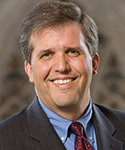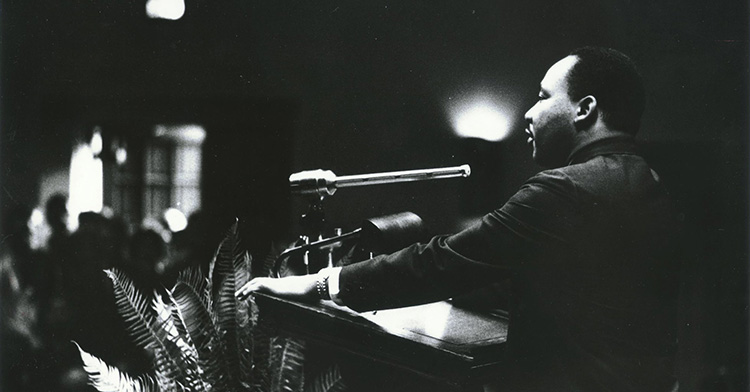Abraham Nussbaum was searching for a language to describe his calling as a physician. Both his medical school training and his socialization into the large-scale organizations of academic medicine had shaped him to see his practice in terms of “parts and money.”
He discovered in Victoria Sweet’s book “God’s Hotel: A Doctor, a Hospital, and a Pilgrimage to the Heart of Medicine” a different, more satisfying set of metaphors to describe the practice of medicine. Sweet had turned to the medieval Christian writer Hildegard of Bingen in search of a more holistic way of approaching patients. Nussbaum reflects on Sweet’s altered vision in his book “The Finest Traditions of My Calling: One Physician’s Search for the Renewal of Medicine”: “Instead of acting like a technician searching for the broken part to fix or replace, she began encouraging the self-healing of her patients, as a gardener would encourage her plants.”
Nussbaum writes that he was entranced by this image -- “a version of medicine that depicted the body as a wonder rather than a machine: the physician as a gardener rather than as a technician, and the hospital as a garden rather than a factory.”
General Stanley McChrystal evokes a similar set of metaphors in describing the kind of leadership he learned to practice as a general in Iraq. He suggests in his book “Team of Teams: New Rules of Engagement for a Complex World” that the most effective leadership of the future will be characterized by the image of “gardening,” even when dealing with large-scale organizations like the army and its technologically driven mechanisms of warfare.
The metaphors we use to describe our work and our organizations matter. They matter because they shape -- either enabling or constraining -- how we envision our work. What might we discover if we thought of ourselves more as gardeners and less as technicians? What if we thought of our organizations more as organisms embedded in ecosystems and less as machines or bureaucracies?
Since the dawn of the industrial revolution, and especially over the course of the last century, we have tended toward technical, mechanistic metaphors to describe work and the shape of organizations.
Frederick Winslow Taylor, one of the pioneers of the modern discipline of management, published in 1911 “The Principles of Scientific Management.” Taylor’s analysis of industrial efficiency launched a century of increased specialization and focus on the most efficient and cost-effective ways to accomplish tasks and maximize workplace productivity.
We should not minimize the positive impact that emerged from such an approach. We have been able to achieve both substantive and procedural innovation as a result of a heightened focus on efficiency. In medicine as well as business, increased specialization and technological efficiency have created conceptual breakthroughs from which people and organizations have derived extraordinary benefit.
Even so, Nussbaum and Sweet point to the dangers of letting mechanistic metaphors become central to our imagination of work and organizations. Such metaphors suck the life out of us and our organizations. What might emerge if we were to rediscover, and develop in fresh ways, metaphors that point toward organizations as organisms embedded in ecosystems? How might our imagination for leading Christian institutions be nurtured? Four insights are particularly salient:
1. We would approach change differently. In mechanistic metaphors, we imagine that things can remain the same. Organizational charts remain static; processes are technical; outputs are measured quantitatively. We tend to frame debates in terms of whether things need to change, how much can be changed at one time, and what the costs of change might be.
But when we imagine organizations as organisms embedded in ecosystems, we see change as inevitable. The questions now shift to whether that change is occurring as growth or as decay, how much ought to be “pruned” and how much “planted,” and what needs to be incubated and imagined afresh in order to cultivate renewal and new life. We begin to pay attention to where specific organizations are in “life cycles” of growth, maturity and death in relation to their larger ecosystems.
Further, in assessing the health and viability of our organizations -- as with any organisms and ecosystems -- we begin to see that storytelling is crucial. We can only understand the present and future in the light of the past, and we can only understand the past in the light of the present and future. Traditioned innovation becomes a mindset that offers hope for the future precisely in its imaginative engagement with both the past and the present.
2. We would emphasize the intrinsic connections among different organizations. In mechanistic metaphors, we see various elements and processes, such as “supply chains” and “markets,” as independent of one another. The central relationships are extrinsic and managed via exchanges and transactions and contracts.
But when our metaphors take the form of organisms embedded in ecosystems, we pay far more attention to intrinsic connections and partnerships. We know that human beings do not exist, much less flourish, independently of relationships and contexts. Friendships are essential to forming virtuous people; so also with organizations. Organizations flourish most sustainably and innovatively when we emphasize the intrinsic relationships, even “friendships,” that are crucial to the broader ecosystem.
3. Leadership would nurture the “keystone” agents in the ecosystem and attend to both the whole and the parts. In mechanistic metaphors, we tend to focus on detailed processes and SMART goals, often losing sight of the larger horizons, what Jim Collins calls Big Hairy Audacious Goals (BHAGs), which enable creativity and growth.
Ecosystems depend on central “keystone” agents that are crucial to sustainability, to the preservation and creation of life. Coral reefs play this role in the ocean, providing an environment in which biodiversity is preserved and nurtured. So also beavers in streams, building dams that create contexts in which fish, birds and other animals can flourish.
We need SMART goals, to be sure. We also need smaller organizations that play key roles in a larger ecosystem. Most centrally, though, we need to attend to the leadership and influence of “keystone” agents that create broader environments for flourishing.
4. We would nurture innovation from creative perspectives. In mechanistic metaphors, we imagine specific parts, processes and even people that need to be “fixed.” We often find ourselves frustrated when fixing one aspect doesn’t in fact create the change we were hoping for. And when problems are “wicked,” we learn that trying to fix one thing may actually intensify the brokenness of other things, making matters worse.
The imagination of ecosystems helps us understand that often we do not anticipate all the effects of specific actions. By developing experiments to examine the direct and indirect effects of particular changes within the larger ecosystem, we can appreciate the large-scale consequences that may follow from relatively small-scale interventions.
The YouTube video “How Wolves Change Rivers” offers a powerful illustration. The reintroduction of wolves into the ecosystem of Yellowstone National Park had far-reaching impact. This included expected benefits to vegetation and the land; it also included unexpected benefits, such as strengthening the banks of the rivers, enabling them to flow more effectively and sustainably. With a mechanistic mindset, the weakened river banks would have been addressed separately and independently, perhaps through steel reinforcements or other expensive interventions that would have had broader (and largely negative) consequences.
Metaphors matter: organizations as organisms, leaders as gardeners. How might that influence where we turn for learning, and to whom we turn for education?









